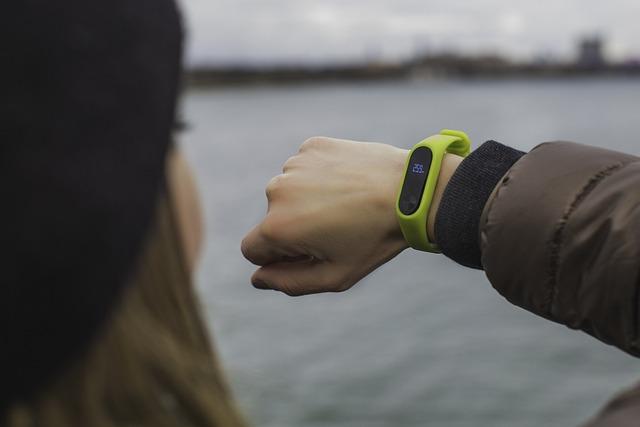In the pursuit of achieving optimal health and fitness, tracking progress is as crucial as the efforts you put into your weight loss journey. Among the various tools available, the Body Mass Index (BMI) tracker stands out as a reliable and accessible method for monitoring your progress. This article will guide you through the essential steps of using a BMI tracker effectively, ensuring that you have a clear and accurate understanding of your weight loss journey. By leveraging the insights provided by BMI measurements, you can make informed decisions about your diet, exercise, and overall lifestyle adjustments. With authoritative guidance, this article will empower you to harness the full potential of a BMI tracker, transforming abstract numbers into actionable insights for sustained weight management and improved well-being.
Understanding the Role of BMI in Weight Loss Progress
Body Mass Index (BMI) serves as a vital tool in assessing weight loss progress, offering a standardized measure that relates weight to height. While it doesn’t directly measure body fat, it provides a quick snapshot of where you stand in relation to weight categories such as underweight, normal, overweight, and obese. By monitoring changes in your BMI, you can gain insights into your overall health trajectory as you shed pounds.
Here’s how BMI can guide your weight loss journey:
– Objective Assessment: BMI offers an objective method to evaluate your weight status, helping you to set realistic goals.
– Progress Tracking: Regularly updating your BMI can help track your progress over time, highlighting both achievements and areas needing attention.
– Health Indicator: A significant change in BMI could indicate improvements in health markers, such as reduced risk of chronic diseases.
– Motivational Tool: Watching your BMI move towards a healthier range can be a powerful motivator, reinforcing the positive impact of your efforts.

Choosing the Right BMI Tracker for Accurate Measurements
When selecting a BMI tracker, it’s essential to ensure accuracy and usability. Accuracy is paramount, as it directly influences your understanding of your weight loss progress. Look for trackers that offer the following features:
- Reliable Algorithms: Ensure the tracker uses scientifically validated algorithms to calculate BMI accurately.
- Regular Updates: Choose a tracker that frequently updates its software to maintain accuracy with the latest health data.
- Cross-Platform Compatibility: Opt for a tracker that syncs seamlessly across devices, such as smartphones and wearables, ensuring you can monitor your BMI on-the-go.
Beyond technical specifications, consider the user experience. A tracker should be intuitive and straightforward, with a user-friendly interface that allows you to input data effortlessly. Additionally, it should offer insightful data visualization tools, like graphs and charts, to help you easily interpret your progress over time. By focusing on these aspects, you’ll be better equipped to choose a BMI tracker that not only provides precise measurements but also enhances your weight loss journey.

Interpreting BMI Changes to Evaluate Health Improvements
Understanding the nuances of BMI fluctuations can be pivotal in assessing your health journey. While the Body Mass Index offers a quick snapshot of your weight category, it’s important to recognize that changes in BMI aren’t always linear or solely indicative of fat loss. Small variations could be attributed to factors like muscle gain, water retention, or even measurement inconsistencies. Therefore, when you observe shifts in your BMI, consider these key elements:
- Muscle vs. Fat: An increase in physical activity may lead to muscle gain, which could offset fat loss on the scale, yet result in a healthier body composition.
- Hydration Levels: Fluctuations in water retention can cause temporary changes in weight, influencing BMI without reflecting actual fat loss or gain.
- Consistency in Measurement: Always measure under the same conditions (e.g., time of day, clothing) to ensure accuracy.
Utilizing these insights can help you interpret BMI changes more effectively, allowing you to focus on overall health improvements rather than just numerical shifts.

Enhancing Your Weight Loss Strategy with BMI Insights
Understanding the intricate relationship between your weight loss journey and Body Mass Index (BMI) can provide a more holistic view of your progress. BMI, a measure of body fat based on height and weight, offers a snapshot of your current health status. Utilizing a BMI tracker allows you to pinpoint how your efforts are impacting your overall health. Here’s how to leverage this tool for optimal results:
- Regular Monitoring: Consistently track your BMI to observe changes over time. This will help you identify patterns and make necessary adjustments to your diet or exercise routine.
- Setting Realistic Goals: Use your BMI as a guide to set achievable targets. Instead of focusing solely on weight loss, aim for a healthy BMI range that aligns with your age and lifestyle.
- Analyzing Trends: Look beyond the numbers. A stable or slightly increasing BMI can indicate muscle gain, which is a positive sign of fitness improvement.
- Customizing Your Plan: Tailor your strategy by incorporating BMI insights. For instance, if your BMI is decreasing at a slower rate, consider intensifying your workouts or revisiting your nutritional intake.
By integrating BMI insights into your weight loss strategy, you not only track your journey more effectively but also ensure that your approach aligns with long-term health objectives. This data-driven method empowers you to make informed decisions, ultimately enhancing your path to a healthier you.
